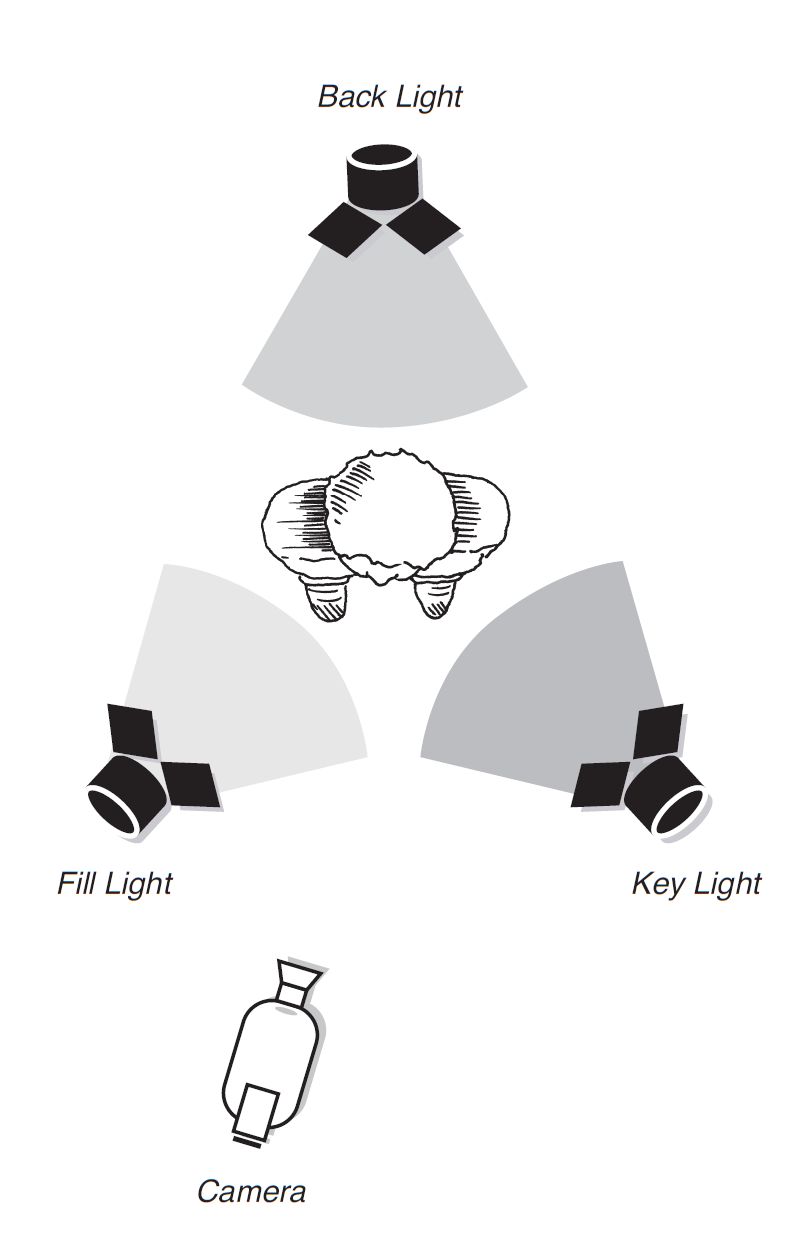
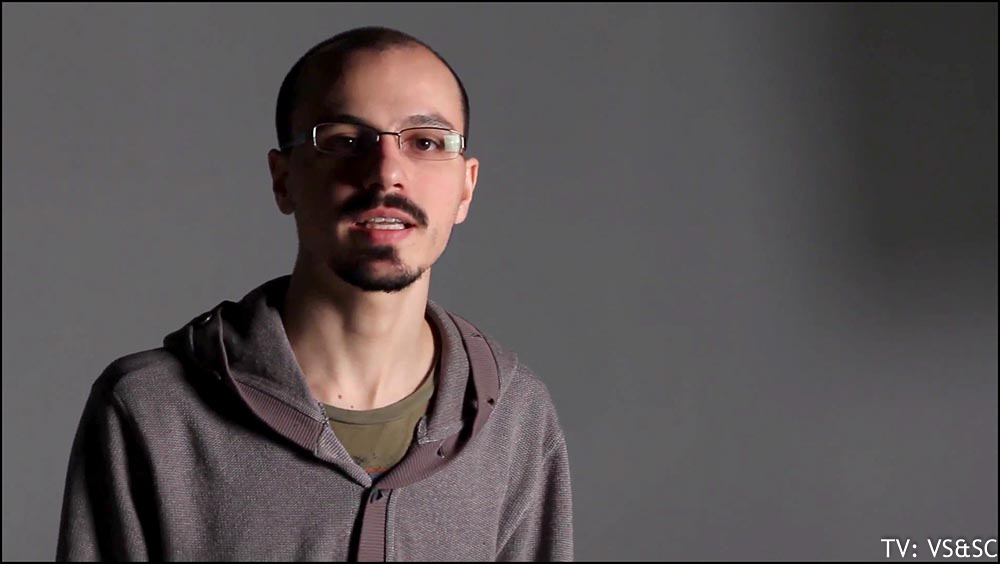
Key light: main source of illumination.
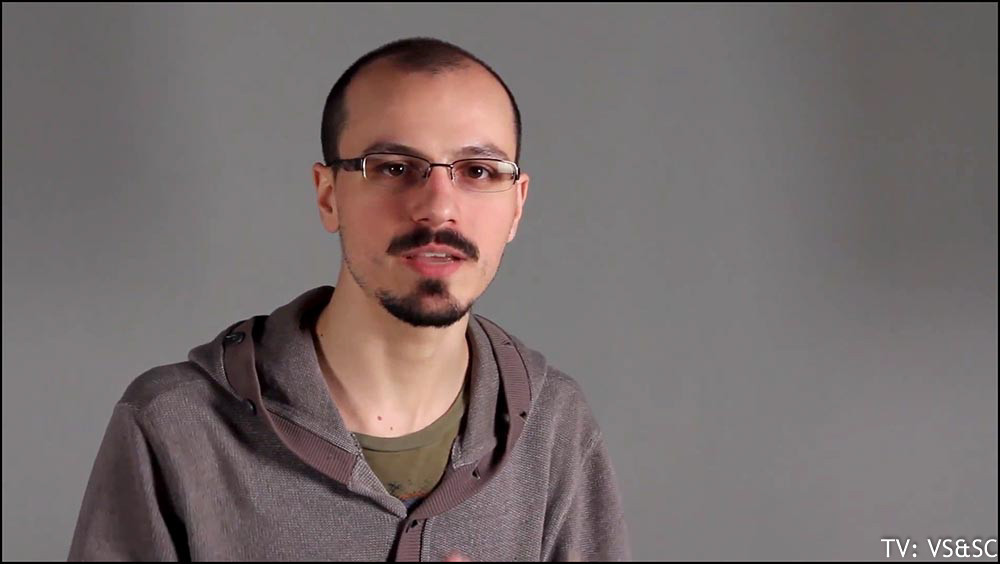
Fill light: fills in shadows created by the key light.
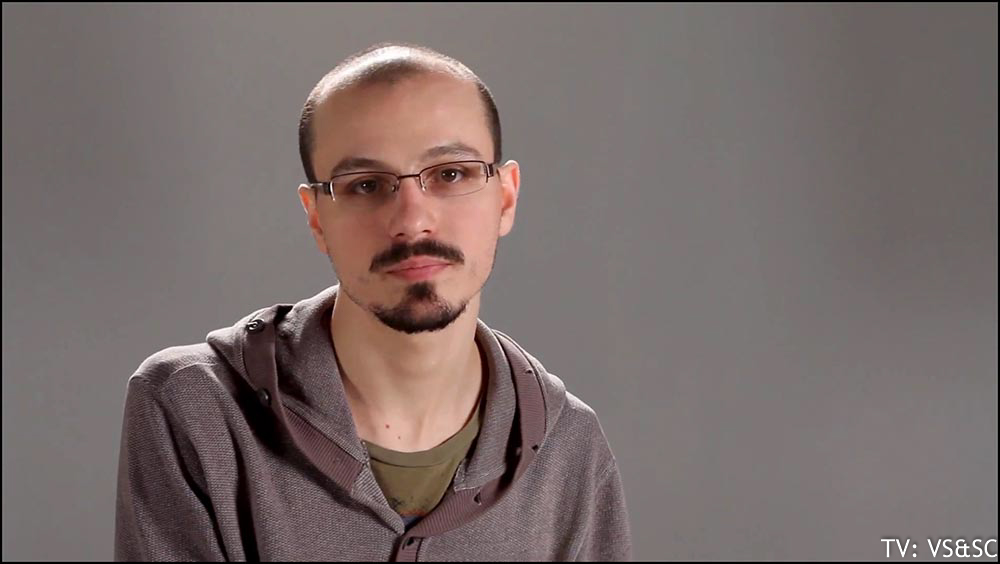
Back light added to key and fill: separates figure from background.
Comprised of key, fill and back lights.
 |
 Key light: main source of illumination. |
 Fill light: fills in shadows created by the key light. |
|
 Back light added to key and fill: separates figure from background. |
Cybill Shephard in Moonlighting (1985)
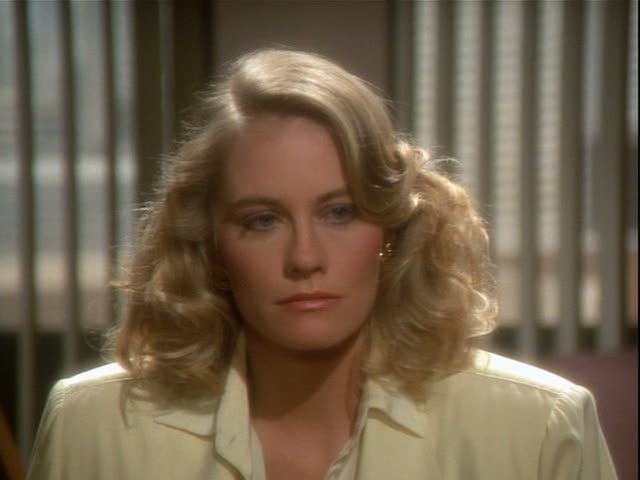
A Night at the Opera (Wood, 1935), 16:00
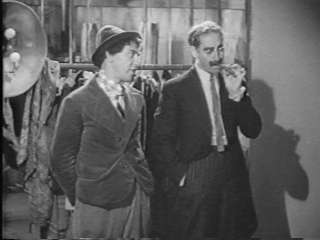
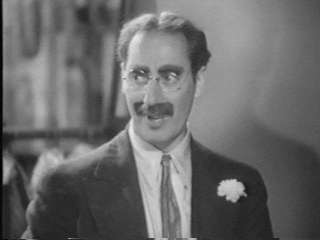
Low key lighting |
|
| Citizen Kane (1941), 18:10. | |
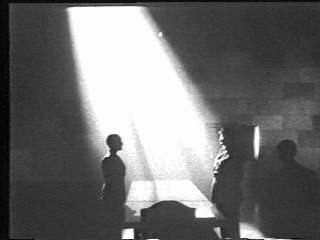 |
|
| The Big Combo (1955) | Double Indemnity (1944) |
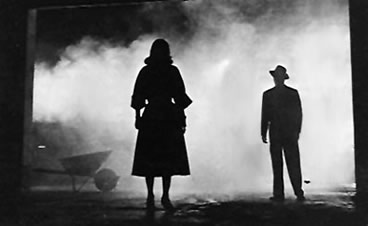 |
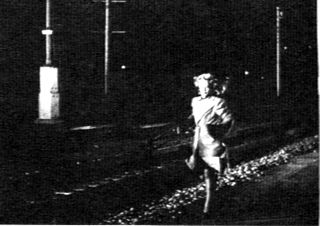 |
| The Lady From Shanghai (1948) | |
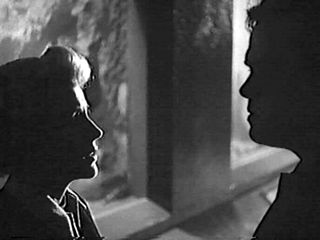 |
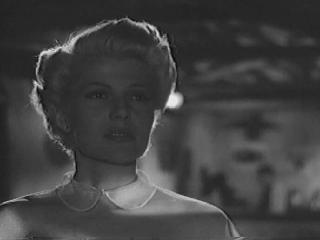 |
| The Matrix (1999) | |
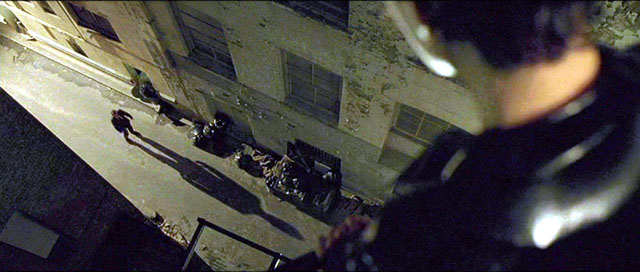 |
|
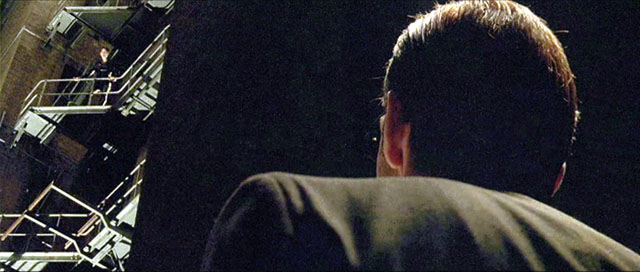 |
|
The Man Who Wasn't There (2001)
Mad Men production still (2010)
Day-for-Night, aka, la Nuit Americaine |
|
| The Hitch-Hiker (1953) | |
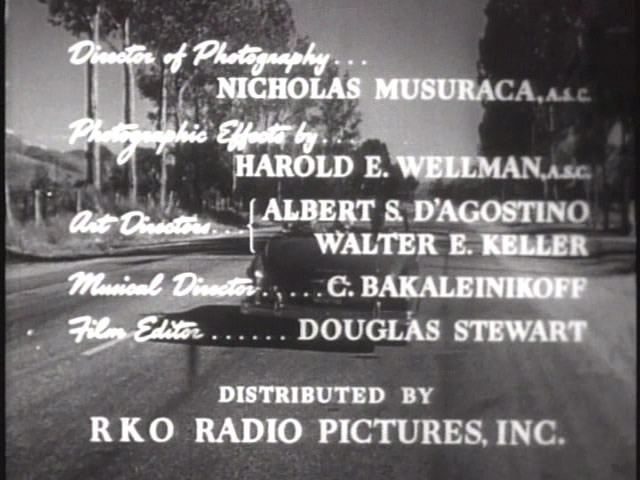 |
|
| Out of the Past (1947) | |
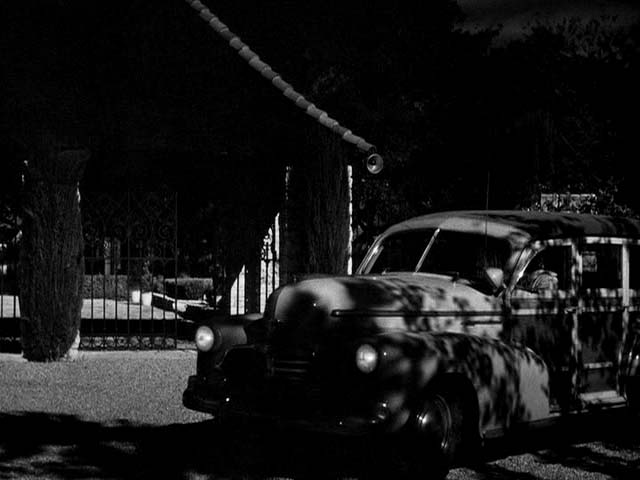 |
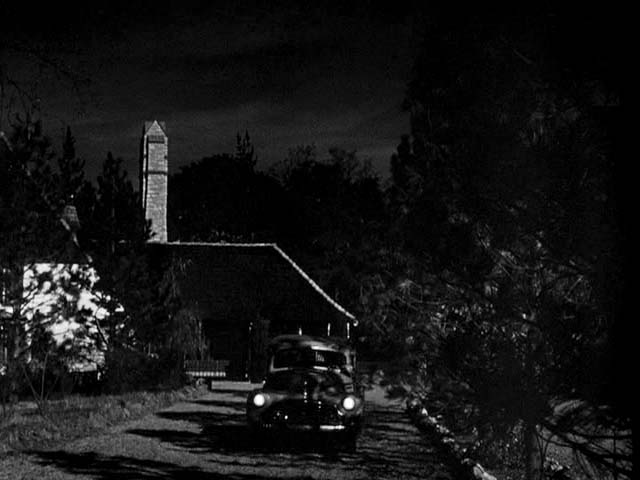 |
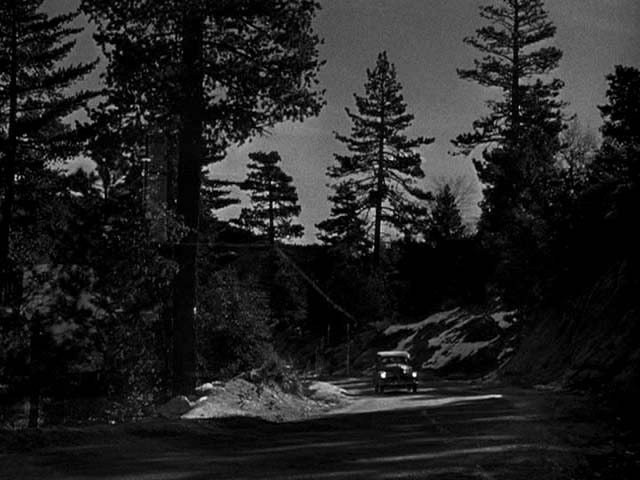 |
|
From "Style and Setting: Mise-en-Scene," Television: Visual Storytelling and Screen Culture, TVCrit.com.